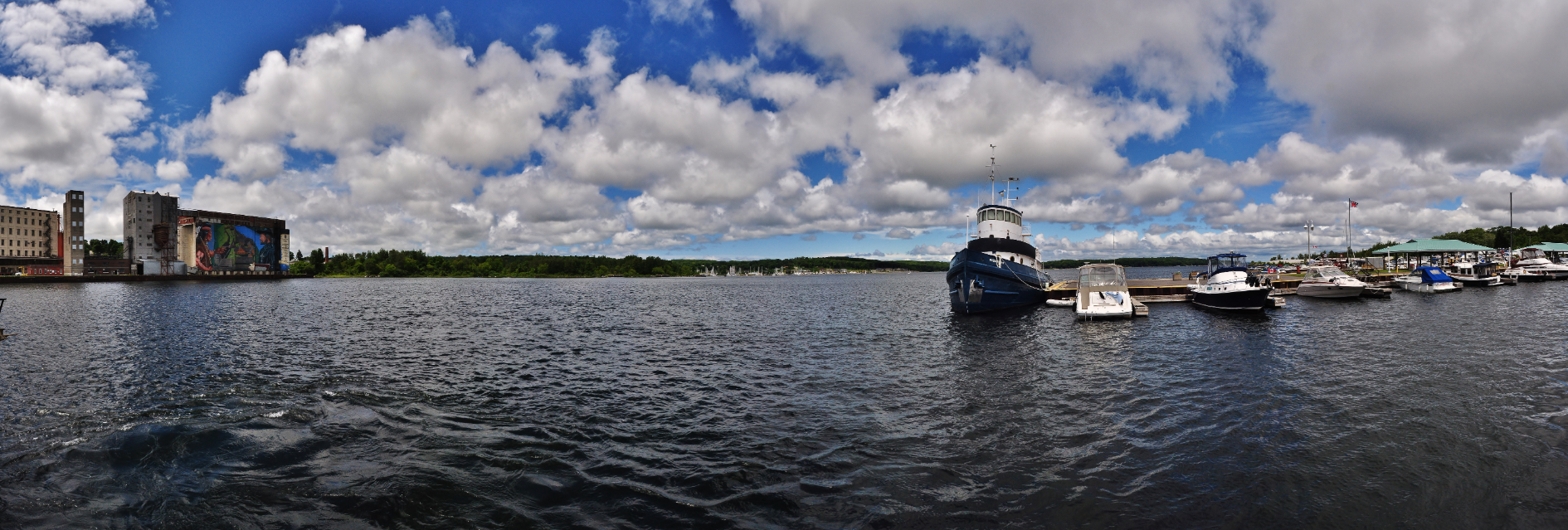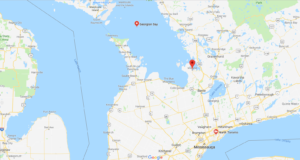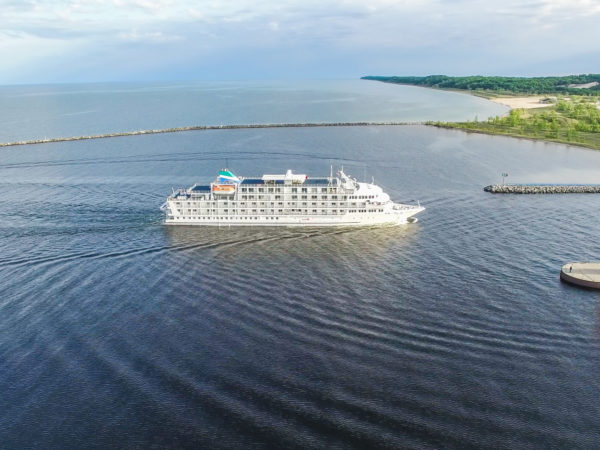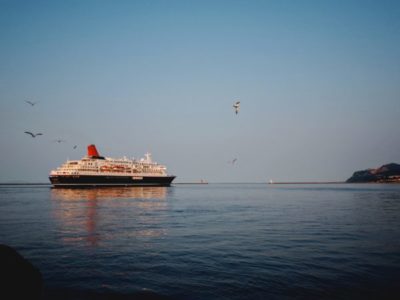
On the northern and eastern shores of the Great Lakes, the province of Ontario has been looking to expand its foothold in the passenger cruising industry.
The bigger ports of Toronto, Kingston, and Windsor are all popular destinations as it is, but some smaller coastal destinations are pushing for more inclusion in cruise itineraries for the coming year.
Great Lakes Now this week is bringing you the stories of some of these smaller ports and how they may attract – or eschew – the cruise ship industry.
Muskegon: Former industrial waterfront makes room for cruise ships and passengers
Traverse City: If You Rebuild It, Will the Cruise Ships Come?
Today, Canada
These more rural areas have concerns about the cost of investing in needed docks and other port facilities for passenger ships with uncertain financial returns.
“With Ontario ports,” said Andy Campbell, Midland’s director of engineering, water, and wastewater management, “What’s the business case to bring a ship here?”
To answer that question, the city of Midland used a $250,000 grant from Ontario’s Ministry of Tourism, Culture and Sport to study and develop a 10-year plan to evaluate making Ontario a major competitor in the Great Lakes cruising industry.
Located on the Georgian Bay some 100 miles north of Toronto, Midland is part of the Cruise Ship Industry Group, a coalition of mayors representing the eight Ontario ports that were the subject of the 10-year project.
Along with Midland, the study includes the cities of Kingston, Windsor, Toronto, North East Manitoulin (Little Current,) Parry Sound, Sault Ste. Marie, and Thunder Bay.
These more rural towns offer fresh destinations for cruise ships, which often favor bigger cities for stops and day trips for passengers.
“There’s a lot of smaller ships being built around the world that will be looking for unique and authentic places to go,” Campbell said.
But for smaller ports and towns, the steep financial cost of buying into the cruise industry is a genuine concern as they are unlikely to see the same amount of tourist traffic as more well-established destinations.
It was this concern that drove the Cruise Ship Industry Group and the Province of Ontario to conduct the study
The results?
A net benefit for the region’s cruise tourism future.
For the smaller towns, according to the study, an initial $6.25 million investment would generate an additional $11.3 million in revenue per year. Over 10 years, this would result in an additional $167 million from cruise tourism revenue alone and the creation of over 140 new jobs.

Midland Railway mural in downtown Midland, Ontario, Photo by Narasimman Jayaraman via flickr.com cc 2.0
Seeing the benefits of such a move, Midland is already pushing to revitalize its downtown area with new street furniture, updated sidewalks, and other beautification projects like tree planting. In addition, Midland formed a new development corporation tasked with overseeing 39 acres of vacant waterfront land, with plans to develop the area and build a hotel adjacent to the pier over the next five years.
Overall, the study found that most Ontario ports have the necessary facilities to accommodate increased ship traffic over the next 10 years. The one exception is Kingston, which has been lagging behind in adequate dock facilities, but is currently negotiating the inclusion of a deep water dock as part of an ongoing renovation of the Wolfe Island ferry terminal.
Besides the required finances, Campbell said, the study’s results reinforce the need for a collaborative effort between municipal, provincial, and federal Canadian agencies to better promote Ontario cruising to potential visitors and to the cruise lines themselves.
“One of the recommendations of the report was to generate a really strong networking group because a cruise ship goes to multiple ports, what does a passenger wish to see at each different port? Is it all-around First Nations events, wine tours, how do we as a group help create our tourism product so that we do have a very comprehensive itinerary,” said Campbell.
As they’ve done in the past, ships will continue to ply the waters of the Great Lakes. Ongoing collaboration between organizations such as the GLCC and Cruise Ontario is expected to further increase the presence of cruise ships for the region’s many port communities.
Featured Image: Harbour in Midland, Ontario, Photo by Mykola Swarnyk via wikimedia.org cc 3.0





